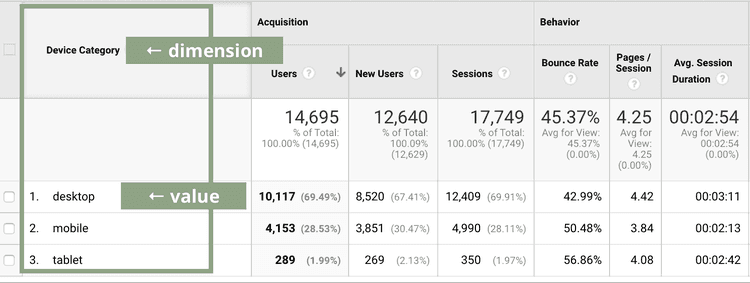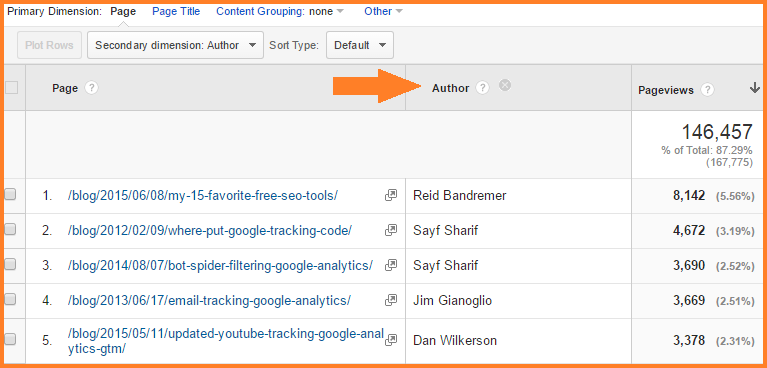Exploring Google Analytics Secondary Dimension: Methods and Advantages
Exploring Google Analytics Secondary Dimension: Methods and Advantages
Blog Article
Unlocking the Power of Secondary Dimension Analytics for Boosted Data Insights and Decision-Making
In the realm of data analytics, primary measurements commonly take the limelight, yet the true depth of understandings exists within the world of additional dimensions. By using the power of additional dimension analytics, organizations can reveal covert fads, uncover correlations, and remove much more purposeful verdicts from their information.
Value of Additional Dimensions
Discovering the significance of secondary dimensions in analytics introduces the surprise layers of data understandings important for notified decision-making in various domain names. Additional measurements give a much deeper understanding of primary data by providing added context and viewpoints. By incorporating additional measurements into analytics, organizations can remove much more nuanced and comprehensive insights from their datasets.
One secret significance of additional measurements is their capacity to section and categorize main information, enabling an extra detailed evaluation of certain subsets within a dataset. This segmentation enables services to identify patterns, trends, and outliers that may not be noticeable when taking a look at the data overall. Additional measurements assist in discovering correlations and reliances between different variables, leading to more accurate projecting and anticipating modeling - secondary dimension.
Additionally, secondary dimensions play a vital duty in boosting data visualization and reporting. By adding second measurements to visualizations, such as charts or charts, experts can develop extra insightful and insightful representations of data, helping with far better communication of findings to stakeholders. Overall, the integration of secondary dimensions in analytics is crucial in unlocking the complete potential of data and driving evidence-based decision-making.
Key Benefits of Making Use Of Secondary Dimensions
Utilizing secondary dimensions in analytics uses organizations a strategic benefit by augmenting the deepness and granularity of data understandings. One vital advantage of incorporating secondary measurements is the ability to sector and filter data, enabling for a much more thorough evaluation of particular facets within a dataset. This segmentation enables organizations to gain a much more nuanced understanding of their audience, performance metrics, and other crucial information points. By exploring data utilizing second dimensions such as time, location, device kind, or customer demographics, companies can reveal patterns, trends, and correlations that may otherwise stay concealed.
Furthermore, the application of second dimensions improves the context in which primary data is translated. By leveraging second measurements in analytics, organizations can harness the complete capacity of their data to drive much better decision-making and achieve their service objectives.
Advanced Data Evaluation Strategies
A deep study advanced data analysis methods exposes innovative approaches for drawing out beneficial understandings from intricate datasets. One such method is maker discovering, where algorithms are utilized to determine patterns within data, anticipate outcomes, and make data-driven choices. This method permits see this site the automation of analytical version structure, enabling the processing of big volumes of information at a much faster pace than conventional methods.
Another sophisticated strategy is anticipating analytics, which makes use of statistical algorithms and artificial intelligence techniques to anticipate future outcomes based upon historical data. By evaluating patterns and fads, businesses can prepare for client actions, market patterns, and potential threats, equipping them to make proactive decisions.
Additionally, text mining and view analysis are valuable methods for extracting insights from disorganized information resources such as social media remarks, client testimonials, and survey reactions. By evaluating text data, organizations can recognize consumer point of views, determine emerging trends, and enhance their services or items based upon feedback.
Enhancing Decision-Making Through Secondary Measurements

Enhancing decision-making through secondary measurements enables companies to make more educated and targeted strategic options. By segmenting client information based on secondary dimensions like buying history or involvement degrees, firms can customize their advertising and marketing approaches to particular audience segments, leading to boosted conversion rates and client fulfillment. Second measurements can assist recognize connections and relationships in between various variables, enabling organizations to make data-driven decisions that drive development and profitability.
Applying Second Measurement Analytics
When incorporating second measurements in analytics, companies can open much deeper understandings that drive tactical decision-making and improve overall efficiency. This involves understanding the details questions the company seeks to respond to and the information points called for to address them.

Moreover, companies ought to take advantage of progressed analytics devices and technologies to streamline the process of integrating secondary dimensions. These devices can automate information handling, evaluation, and visualization, permitting companies to concentrate on interpreting insights instead of hands-on information control.
Conclusion
Finally, second dimension analytics play an essential role in enhancing data understandings and decision-making procedures. By making use of innovative data evaluation techniques and carrying out second dimensions successfully, companies can open the power of their data to drive calculated business decisions. The key advantages of using additional dimensions can not be overemphasized, as they give a much deeper understanding of data patterns and relationships. It is crucial for organizations to leverage second dimension analytics to remain affordable in today's data-driven landscape.
In the world of data analytics, primary dimensions commonly take the spotlight, yet the true depth of understandings exists within the world of second measurements.Making use of secondary dimensions in analytics uses companies a critical benefit by increasing the depth and granularity of data understandings. By leveraging second dimensions in check analytics, companies can harness the full potential of their information to drive better decision-making and achieve their service objectives.
Implementing data validation procedures and normal audits can assist preserve data top quality and integrity.
By making use of innovative data evaluation techniques and applying secondary dimensions efficiently, companies can open the power of their information to drive strategic business decisions.
Report this page